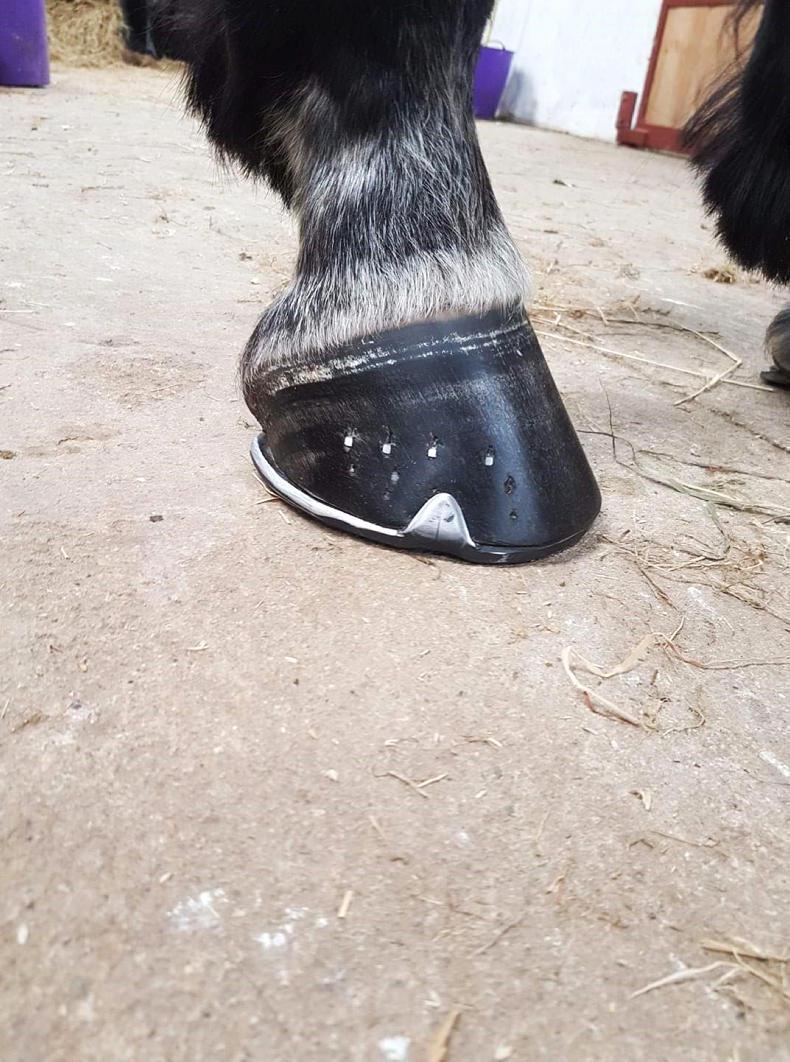What interested you in becoming a farrier and how did you go about gaining your qualification?
I have always had an interest in working with horses from a very young age so when I finished school I decided to seek an apprenticeship. I was very lucky to get with Roscommon master farrier Enda Egan. I spent the four years with and learned many skills from him.
I completed my exams through the Irish Master Farrier Association, which I am currently a committee member of. I also take part in many farrier competitions which are held throughout the country.
In these competitions you are assessed on your shoe making skills and overall shoeing job. I find this helps develop new skills when you have your work judged by some of the top farriers in Ireland and England.
I recommend all farriers should take part in these competitions as it keeps you to have a high standard of work.
How often to you recommend horses should be shod and what factors influence how often they should be shod?
I recommend that horses should be shod on a four-six week cycle. Leaving horses longer than this cycle results in their feet becoming overgrown and unbalanced, risking injury and strains to tendons and ligaments. Sometimes if you were doing corrective work on young stock they would need to be done on a more frequent schedule of even less than four weeks.
Signs that horses need to be shod are long toes, risen clinches, the foot has outgrown the shoe and the horse may be stumbling which can be quite dangerous on ridden horses.
I always emphasise good basics on my shoeing such as foot trimming, shoe selection, shoe fitting and nailing and finish are all very important to have right to ensure the horses welfare is kept to a high standard which is the number one priority.
What different types of shoes do you and why you choose certain types of shoes for certain horses?
I use a variety of shoes but depending on what the horse and rider partake in will decide on what shoe is used. For example, on hunting horses I like to use a concave shoe as it provides more grip for crossing unknown territories.
For show jumping horses I would use a flat wide web shoe for optimal support and for racehorses I would use a light steel. So each horse is assessed and treated as an individual case every time. I also carry steel with me so I can make any surgical or corrective shoe if required.
What are the different factors you take into account when you are shoeing a horse?
The main factor that I would take into account is, like the above question, it’s all about what the horse is used for as each equestrian event requires different styles of shoes etc. Also the conformation and age of the horse is taken into consideration before shoeing commences.
Do you think it’s important for veterinary surgeons and farriers to work together when treating horses?
 Yes, I work very closely with some of the country’s best veterinary surgeons. I am very lucky that I have built up a great relationships with them over the years. I think it’s important to work closely together, I also would also have a good working relationship with chiropractors as I think we can help each other out when dealing with complex cases.
Yes, I work very closely with some of the country’s best veterinary surgeons. I am very lucky that I have built up a great relationships with them over the years. I think it’s important to work closely together, I also would also have a good working relationship with chiropractors as I think we can help each other out when dealing with complex cases.
I am fortunate enough to have my own forge where people can bring their horses from veterinary referrals. In the coming months I hope to open a one-stop-shop clinic at my forge where customers can visit all three in the one day, for anyone that has a horse with lameness issues.
What is the most common problem you come across and how do you go about dealing with it?
The most common problem I come across with new horses is people leaving horses too long in between shoeing cycles. This leads to many problems that could be avoided by maintaining a regular shoeing cycle. Thankfully, my clients are all very regular as I have a text alert set up which reminds people when their horses are due.
I have noticed a lot of horses that are referred to me often suffer from heel pain, most often from shoes that are too small and not fitting correctly.
This is something I always stress, that owners should ensure their farriers are always performing to high standards when shoeing their horse.